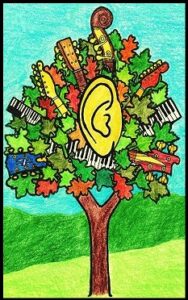 In an earlier post about the album It’s A Beautiful Day, I quoted David LaFlamme’s remarks about “the world of Classical music” at that time. His story illustrates the point that there is a world of classical music, and there is a separate world of modern music. The two worlds operate very differently. Let’s compare classical and modern musical settings.
In an earlier post about the album It’s A Beautiful Day, I quoted David LaFlamme’s remarks about “the world of Classical music” at that time. His story illustrates the point that there is a world of classical music, and there is a separate world of modern music. The two worlds operate very differently. Let’s compare classical and modern musical settings.
“Classical music” is a catch-all term for orchestral music from the renaissance to 1900, and includes the Baroque and Romantic eras. Settings which incorporate classical working methods include symphonies, youth orchestras, TV and radio orchestras, chamber groups, choirs, marching bands, big bands, stage/lab bands, theaters and nearly all school music programs.
The “classical world” is the world of piano accompanists, band directors, professors, conductors, composers, arrangers and union musicians. It’s UIL competitions and challenging for first chair. It’s the Longines Symphonette, the Van Cliburn International Piano Competition, Broadway show tunes, operas, ballets and film scores. It’s everything from the comic pretenses of Spike Jones to the comical pretensions of Lawrence Welk. (Myron Floren was the coolest musician on that show, and I told him so in person once.) The most coveted professional positions in this world are chairs in established symphony orchestras, and academic positions.
The world of classical music is based on an established literature, some of it going back hundreds of years, all neatly bound and cataloged. Today, practically all classical music has been digitized. Learning to read music is an end in itself, because everything in the classical world centers on the printed page. If you want to be a part of this world, then reading music has to become second nature.
The Modern, non-classical music world includes campfire and round-table jams, and open mics. It’s the world of rock, country and blues cover bands, battles of the bands, and recording sessions. It’s the world of drum kits and electrified instruments. It’s club gigs, house concerts, music festivals, jingles, and concert tours. It’s independent musicians and songwriters, the unschooled and the unsigned. It’s dynamic, spontaneous, and unpredictable. If there’s a new song on the radio this afternoon, you’ve got to be ready to play it on stage tonight.
Until recently, for most modern musicians, the ultimate professional goal was to get a recording contract. But now there are many other avenues for monetizing music. In the digital age, more independent musicians are entrepreneurs, though this angle is lost on most private music schools.
In the modern music world, you can’t rely on store-bought sheet music. It is possible to buy published note-for-note transcriptions, by instrument, for any song in the Metallica catalog. But groups like Metallica are the exceptions to the rule. Published note-for-note transcriptions of instrumental parts are available only for songs by the top groups on a few major recording labels. For most rock, country and jazz recordings, there are no published note-for-note transcriptions of individual parts, because scoring isn’t part of the creative process to begin with. The after-the-fact transcriptions they sell in music stores are strictly for the lesson market. Other than transcribed keyboard parts, professionals practically never use them. For most recorded modern music, across all genres, there are no note-for-note transcriptions of individual parts, published or otherwise.
Staff notation plays little part in the rock music world. For some musicians, it plays no part at all. Modern musicians also have the choice of tablature, chord charts, or number charts, if they use written notes at all.
© 2019, 2020 Greg Varhaug